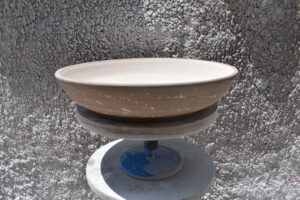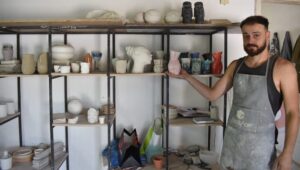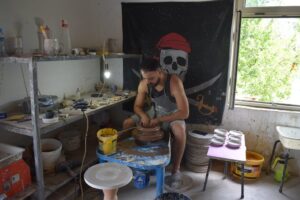Wheel pottery/clayware-making goes through the following processes:
Wedging of clay by folding and spiraling it to remove all air pockets and make it completely homogeneous.
Centering the clay on the wheel.
Pulling up the clay and molding it.
Removing clay or object/model from the wheel and placing it to dry and trimming (trimming) process (trim away the excess clay and finish off details in stacks).
Baking. Once the object has completely dried (it takes 1-3 days) the first baking is made in the kiln (bisque baking at 11000C). The process further continues with glazing, decoration, crystalline coating (in this process the object is colored as desired), and the final baking at 9700C after glazing.
Building up tassel/tassels (negative plastered mold of the object which serves to duplicate the object/model).
Building the basic molding in moist clay.
Casting the plaster and taking the negative of the finished object.
Cutting off the negative and putting the casing which holds the mold homogenous so as to be as practical as possible during the opening.
Refining the shliger (a mixture of clay and water) and casting it into the tassel (negative mold of the object), and after 30 minutes, empty and remove the excess shelter. After 24 hours, the tassel is deconstructed and left to dry for 1-2 days.
Sanding the shape obtained and putting it into the kiln for baking as described in point 2 below.





